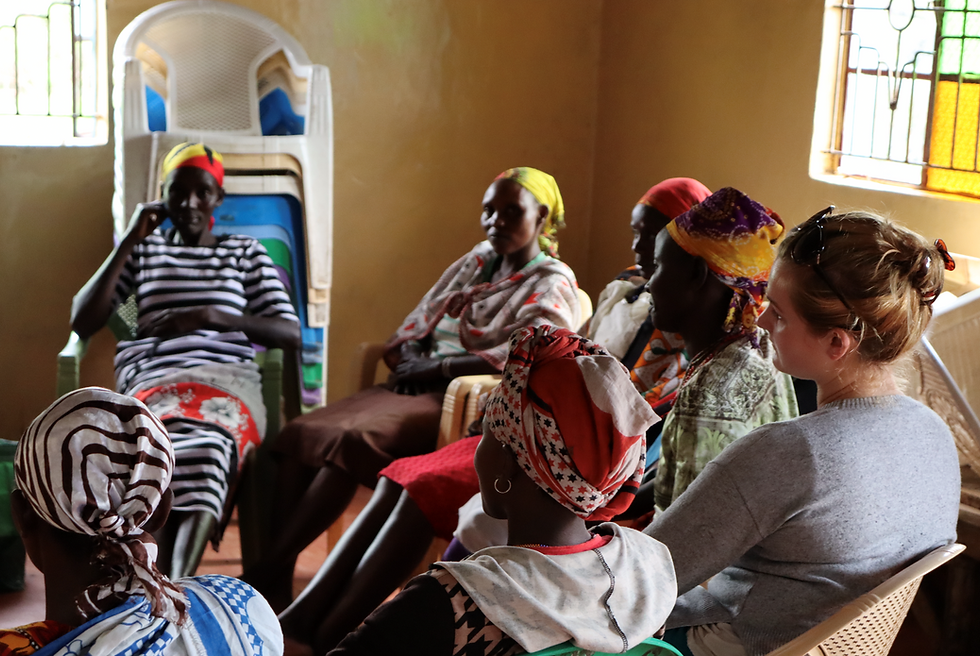The LIFE Lynx Project: involving hunters, promoting communication
- IUCN SSC Human wildlife interactions

- Mar 7, 2023
- 3 min read
Updated: Mar 20, 2023
The HWIWG is very glad to start 2023 with two talks and discussion led by the LIFE Lynx project this coming March. You are invited to join us for a 30 minutes talk focussing on their strategies of communication and awareness raising to involve key interest groups in the reintroduction of the lynx to Eastern Europe, followed by Q&A and an open discussion where participants are invited to exchange ideas drawn from their own practice and/or research. The aim of the event, as in our past events, is to promote an opportunity for the exchange of ideas and for finding solutions for human-dimension issues taking place in conservation translocations.

The first one will take place on Tuesday the 7th of March at 4-5.15 pm (GMT) / 5-6.15 pm (CET) and the second on Tuesday the 14th of March at 4-5.15 pm (GMT) / 5-6.15 pm (CET). These events have been recorded and are available to watch in Resources.
07. 03. 2023: Saving the lynx from extinction - actively involving hunters in the LIFE Lynx project's conservation activities
Protection activities that do not involve public participation are usually doomed to failure from the outset. In particular, activities to reintroduce species that are already extinct in an area must be based on the participation of key stakeholders an
d the general public. The Eurasian lynx was once extinct in Slovenia, and hunters have been the main catalysts for its reintroduction. As the population is highly inbred due to the introduction of six animals, the introduction of new genes was urgently needed. In the framework of the LIFE Lynx project, unrelated individuals have been translocated to Slovenia and Croatia and their inclusion in the population will prevent the species from becoming extinct again. The reintroduction of lynx would not have been positively received without the active involvement of hunters in releases
communication and, above all, field monitoring activities.
Led by Rok Černe (LIFE Lynx project coordinator at Lead Beneficiary Slovenia Forest Service) and Tilen Hvala (Hunters Association of Slovenia)
14. 03. 2023: Communicate to conserve the lynx – carrying out communication, and science-based activities to raise awareness
Human tolerance is a key factor in the conservation of large carnivores. In Europe, where human settlements and large carnivore habitats are intertwined in a mosaic landscape, the involvement of local communities and key stakeholders (hunters in the case of the Eurasian lynx) is essential. Recognizing the importance of communication, it is carefully planned and integrated into all concrete conservation activities of the LIFE Lynx project. Exploring people's attitudes, their knowledge of the species, and especially the influencing factors, gives good insight into the social acceptance of the species and its dynamics. The LIFE Lynx project uses both a research and an implementation approach to communication. The survey of the views and knowledge of the species by different stakeholders was carried out prior to the planning of the Lynx introduction itself and has provided an important theoretical framework. During the implementation of the project activities, repeated surveys are used to monitor the dynamics of social acceptance and the contribution of the project's communication activities. In parallel, a number of concrete communication and education activities are being carried out to reach as wide an audience as possible: hunters (individual meetings, dissemination at events), local public (local consultative groups), younger generations (preparation of teaching materials and training for teachers, adopt-a-Lynx program for schools), the general public (social media, lectures and presentations, thematic learning trail, art camps).
Led by Maja Sever (LIFE Lynx project communicator, Slovenia Forest Service), Vesna Mihelič Oražem (PhD, project associate, Slovenia Forest Service), Bernarda Bele and Manca Velkavrh (project associates from the University of Ljubljana, Biotechnical Faculty, Department of Biology).





Comments